Fire Alarm
Installations
Design
Installation
Commissioning
Fire Alarm Regulations – A simple guide
What are the Fire Alarm regulations and how do they affect my business?
Current Fire alarm regulations are legislated by the Regulatory Fire Reform (Fire Safety) Order 2005, and British standards BS5839. In short, they state that all business premises must have an “appropriate Fire detection system”. What is considered appropriate will depend on the size of your business, what you do, and who is in the building at any given time. In order to determine what type of Fire detection system you will need, a full risk assessment must be undertaken. It is recommended that you use a reputable fire safety company to undertake the risk assessment if you do not feel confident in doing this. They can then design and maintain the system to the relevant standards and legislation. It is important to make sure that your Fire Alarm system is both the right Grade and Category for your business, with clear reference to this in your fire risk assessment.
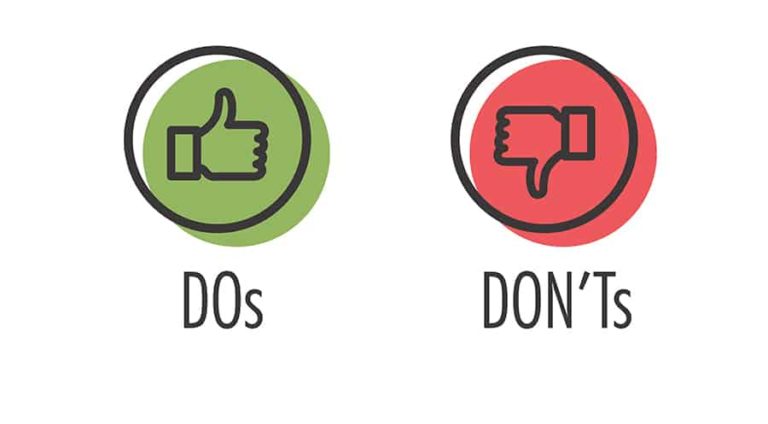
Fire Alarm Installation
Who can install a Fire Alarm?
The person who installs the fire alarm or system must be a competent person, this means they should;
- Understand the various types of systems and how they work
- Be familiar with the make and model of the fire alarm or system
- Be able to identify which grade and category of fire alarm you need
- Be able to design a system to meet the grade and category requirements
- Have a good understanding of BS5839
- Have sound electrical knowledge
For most businesses this means enlisting the services of a reputable fire safety company who can ensure compliance.
Fire Alarm Types
What type of fire alarm system do I need?
Addressable Fire Alarm Systems
Addressable alarm systems can identify when individual alarms are triggered, or go into “pre alarm” and can therefore pinpoint the exact location of a fire. This is also helpful when maintaining and servicing the system because any errors can be located to specific components. This saves time and money when servicing.
How do Addressable Fire Alarms work?
– each individual device has its own unique electronic address.
– if one activates, the fire alarm panel tells you precisely where the problem is.
– most suitable for larger or higher risk environments – e.g schools, care homes, hospitals.
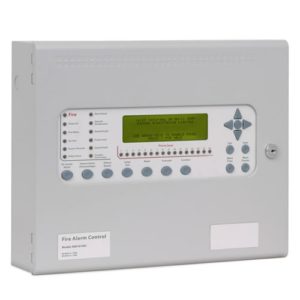
Conventional Fire Alarm Systems
Conventional alarm systems have a number of circuits (zones) on which fire detectors are located. The circuits are monitored and if any of the detectors trigger, the overall alarm will be raised and the particular zone will display on the panel.This allows the fire brigade or fire protection to look in a general area for a fire, of problem, when they arrive on site.
How do Conventional Fire Alarm Systems work?
– divides your premises into broad zones
– in the event of an alert, the fire alarm panel identifies the zone, but not the precise area
– most suitable for smaller or lower risk environments
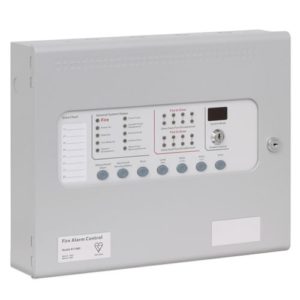
Fire Alarm Design
What category of fire alarm system does my business need?
In order to determine what type of fire alarm system you need for you business premises it is important to have an up to date Risk Assessment undertaken by a competent person- usually a fire protection company. This will outline what Level and Category system you need. To make sure you get the right fire alarm system to meet UK fire alarm regulations, it is recommended that you use a reputable fire safety company to design it. You should also make sure they design to BS 5839 specifications (the relevant British Standard), otherwise you may not be covered for regulatory or insurance purposes.
Manual Systems – Category M
Category M systems are manual systems. They rely on occupants of the building triggering the system once a fire is discovered. Category M systems are a basic requirement in places of employment. They are not suitable if there is a sleeping risk, for example there are people sleeping in the building or in adjoining buildings.
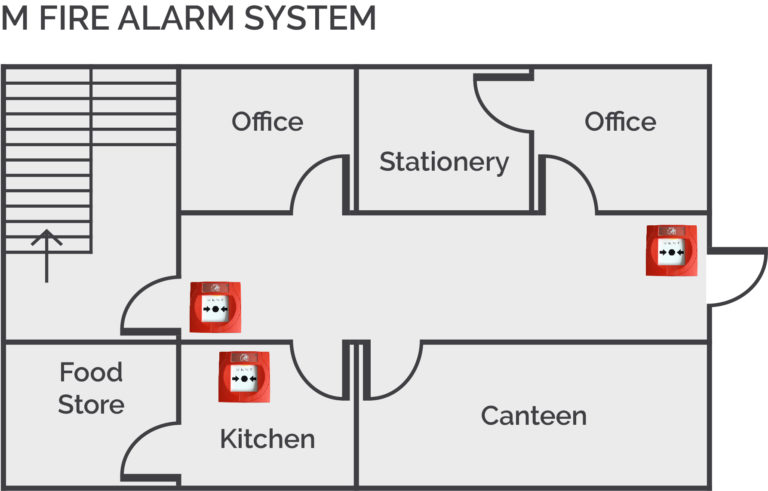
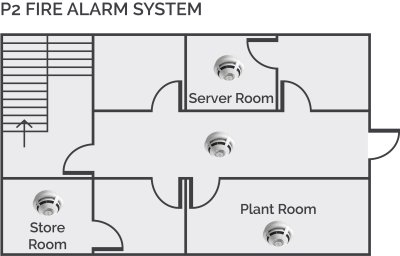
Property protection Systems – Category 2/P2
Category P2 systems provide fire detection in specified parts of the building where there is either high risk or where business disruption must be minimised.
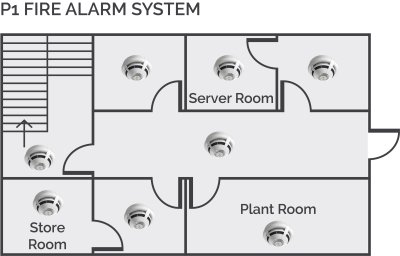
Property Protection Systems – Category 1/P1
The system is installed throughout the building – the objective being to offer the earliest possible warning of fire to minimise the time between ignition and the arrival of firefighters.
Life safety Systems – Category 5/L5
Category 5 systems are the ‘custom’ category and relate to specific requirements, as specified by a risk assessment, that cannot be covered by any other category. As with all installations, careful reference must be made to the risk assessment so that the objective of the cover is clear.
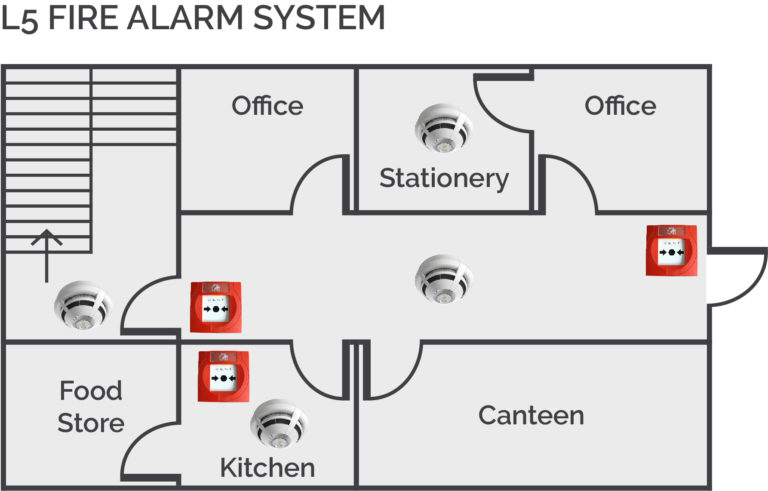
Life Safety System – Category 4/L4
Category 4 systems cover escape routes and circulation areas, with the main objective being the protection of the escape route.
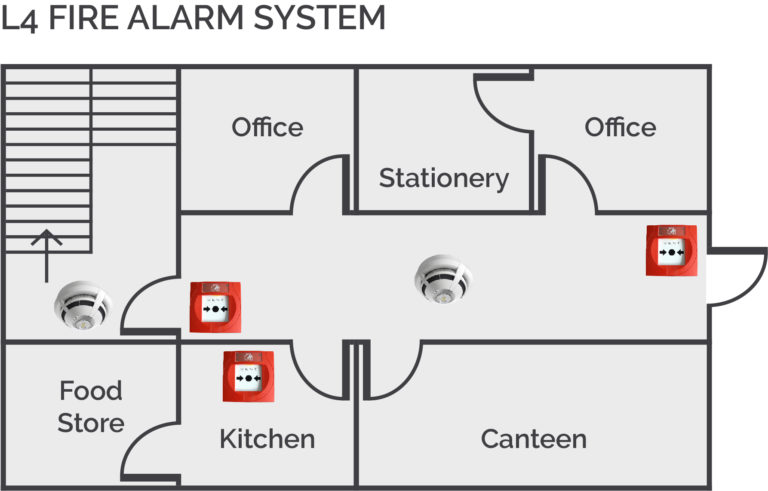
Life Safety System – Category 3/L3
Category 3 systems offer cover escape routes and additional areas as per risk assessment with the objective being that the people in the building are warned early enough to ensure that all are able to exit the building before escape routes become impassable.
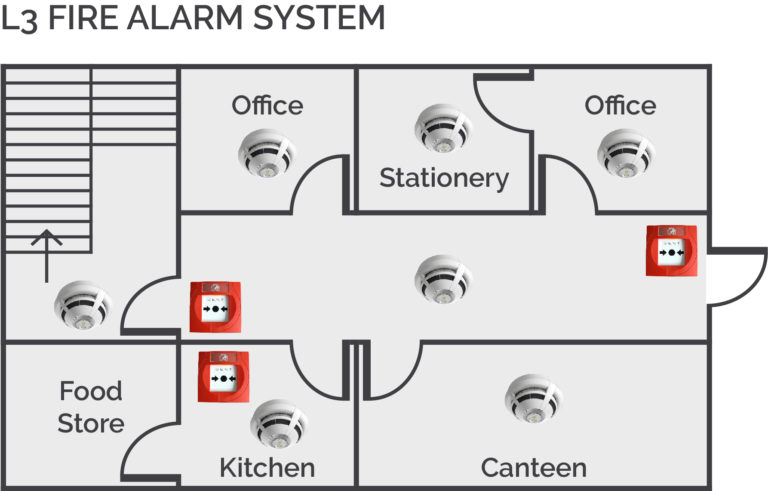
Life safety system category 2/L2
Category 2 systems relate to automatic fire protection in defined areas of the building as well as satisfying the requirements of Category 3. The wider cover relates to parts of the building considered to have a high level of risk or fire hazard, for example server rooms, kitchens ect.
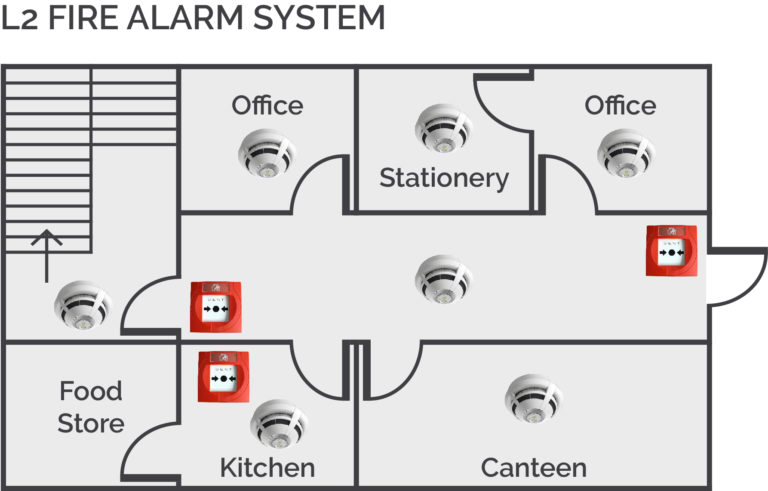
Life safety system category 1/L1
With Category 1 systems, the whole of a building is covered with minor exceptions. This means that if a fire occurs in any part of the premises, the building’s occupants are warned via early detection and can leave via escape routes. This type of system would be appropriate for high risk sites such as care homes, schools or hospitals.
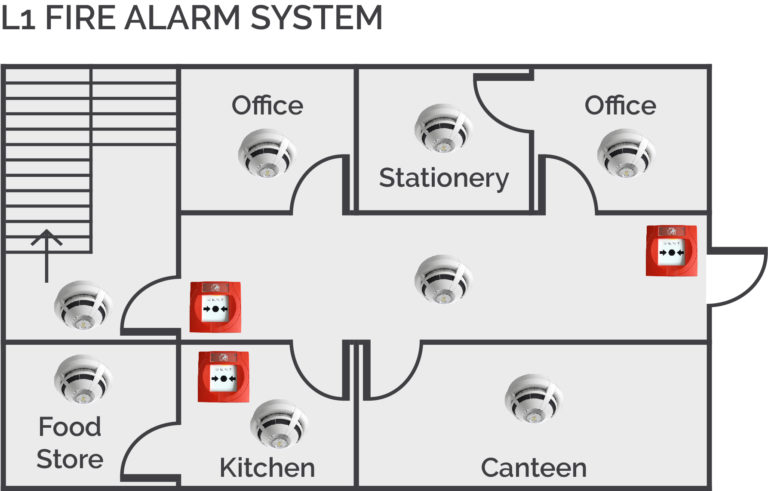
Fire Alarm Commissioning
How do you ensure your system is fully compliant?
- Design– At Md Bros Fire Protection we ensure the system is designed to the current British Standards. We ensure that the system addresses all aspects of the risk assessment, and that we have completed an in depth site survey to ensure that the design takes into consideration all elements of the premises and their use.
- Testing and certification
– We test and inspect your system to ensure that it complies with all relevant legislation, and that it meets the standards of our internal quality assessment. If we are happy, you will receive certification and documentation, along with a full handover pack,We will also deliver the necessary user training required to make you and your staff competent to undertake the user weekly tests.
- Warranty – All Fire Alarm Installations come with a 12 month warranty which includes labour charges.
- New Fire Alarm Installations also include the first years servicing come free
- We are also a NICEIC accredited company, so where needed, we will notify building control of any amendments to your electrical installation.

Get In Touch
If you have any questions about the above information, or you would like us to provide a completely free Fire Alarm Installation quote, please do not hesitate to contact us.

Home
About
Contact
MD Bros Fire Protection.
All rights reserved
